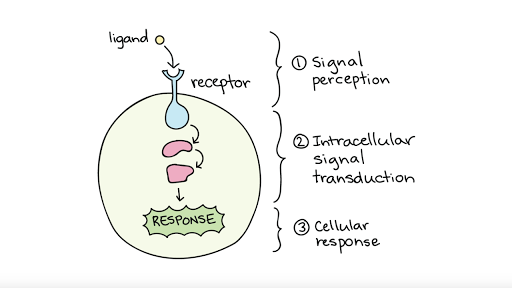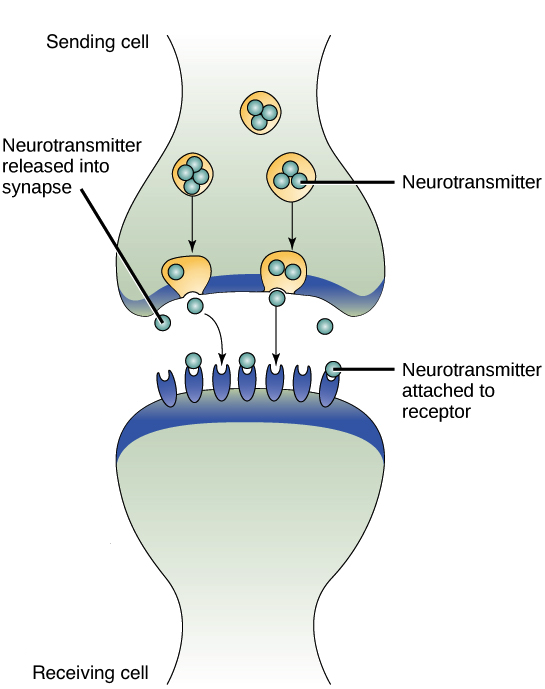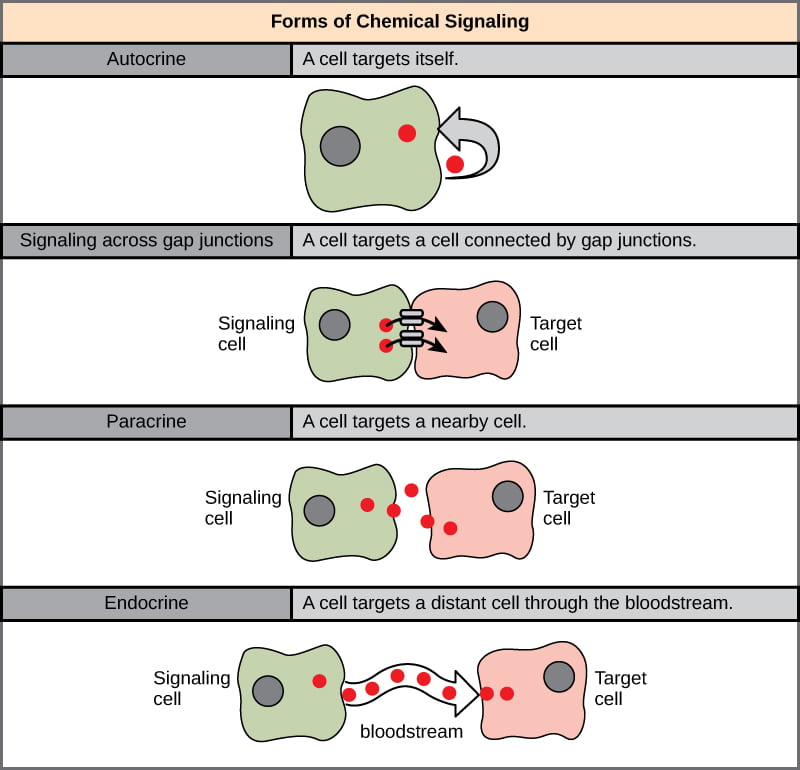Which Junction Is Used to Pass Chemical Signals Between Cells
They allow the nervous system to connect. Allow chemical and electrical signaling between cells.

Introduction To Cell Signaling Article Khan Academy
Both animals and plants have cell junctions that connect to the cytoplasm of adjacent cells.

. Open and close to regulate movement of small molecules and ions. Without these passageways material could not pass. The proteins allow only the passage of ions and small molecules.
Chemical synapses take the form of a small gap. We discuss each of them in turn except for chemical synapses which are formed exclusively by nerve cells and are considered in Chapters 11 and 15. The burst of electrical activity created by the rush of ions into the cell by the opening of an ion channel.
Allows direct and rapid cell-cell communication through cytoplasmic bridges between cells. Allow chemical and electrical signals. Passage for ions amino acids sugars small proteins miRNA for gene expression Synaptic Signaling.
These junctions allow communication between adjacent cells via the passage of small molecules directly from the cytoplasm of one cell to that of another. The hemichannel pair connect across the intercellular space. The major kinds of intercellular junctions within each group are listed in Table 19-1.
Gap Junctions- Cell junction that are next to the cells they use to communicate with one cell to the next create cytoplasmic bonds. Tunnels of cytoplasm between cells. Occluding junction found in invertebrates.
Signal triggers the opening of an ion channel that allows a rush of ions into the cell. Signaling substances dissolved in the cytosol can pass freely between adjacent cells. Composed of transmembrane Cadherins and linked to peripheral membrane protein Catenins.
One gap junction channel is composed of two protein hexamers or hemichannels called connexons in vertebrates and innexons in invertebrates. They are crucial to the biological computations that underlie perception and thought. Animal cells adhere to one another with continuous ECM tight junctions andor desmosomes.
The neuron transmitting the signal is called the presynaptic neuron and the neuron receiving the. Adjacent plant cells can communicate via plasmodesmata. This measure combines the conductance of the uninjected cell with the junction conductance between the coupled cells.
These channels connect the cytoplasm of each cell and allow molecules ions and electrical signals to pass between them. By direct contact animals have gap junctions plants have plasmadesmata. The junction between nerve cells where signal transmission occurs is called a synapse.
Gap junctions are narrow tunnels between cells that consist of proteins called connexons. Ions and small molecules pass through gap junctions. The rapid intracellular passage of ions and signaling molecules mediated by gap junction channels and the extracellular signaling by hemichannels renders them suitable for sensing mechanical strain and later transmitting.
They directly connect the cytoplasm of two cells which allows various molecules ions and electrical impulses to directly pass through a regulated gate between cells. CC gjgj guninjected where gj is the junction conductance and guninjected is the membrane conductance of the uninjected cell. United connexins create a protein channel or connexin that can open or close.
A synaptic signal is a chemical signal that travels between nerve cells. Cylindrical proteins like hollow rivets interlock to create passage ways. There are also axon-to-axon dendrite-to-dendrite and axon-to-cell body synapses.
Gap junctions are cylindrical channels between animal cells that allow small molecules and ions to pass from the inside of one cell to the inside of the adjacent cell. Much more regulated spacing of these junctions between cells. Molecules that can pass between cells coupled by gap junctions include inorganic salts sugars amino acids nucleotides and vitamins but not large molecules such as proteins or nucleic acids.
Chemical synapses allow neurons to form circuits within the central nervous system. Gap junctions are a type of cell junction in which adjacent cells are connected through protein channels. The cell processes of osteocytes are connected with each other and the lining cells via gap junctions 3435152 thereby allowing direct cell-to-cell coupling.
These junctions interact with actin and link cell to cell. Allow cytoplsmic transfer of electrical and chemical signals between adjacent cells. Gap junctions are found in between the vast majority of cells within the body because they are found between all cells.
When found in plant cells similar structures are called plasmodesmata. Animal cells can communicate by direct contact. Gap Junction Definition.
The synapse or gap is the place where information is transmitted from one neuron to another. Must be used in conjunction with a concentration gradient and reset each time. Signal is received by a target cell nearby paracrine signaling ex is growth factors ex is a neurotransmitter synaptic signaling.
Synapses usually form between axon terminals and dendritic spines but this is not universally true. Chemical synapses are biological junctions through which neurons signals can be sent to each other and to non-neuronal cells such as those in muscles or glands. Adjacent animal cells can communicate via gap junctions.
Communicating junctions mediate the passage of chemical or electrical signals from one interacting cell to its partner. Cell-cell gaps allow adjacent cells to communicate with each other typically by exchanging small molecules. Signals within the nerve cells are propagated by fast-moving electrical impulses.
In this manner gap junctions allow communication between cells through the exchange of materials or the transmission of electrical impulses.
Types Of Signals Biology For Majors I

Intro To Chemical Signaling And Communication By Microbes Organismal Biology
No comments for "Which Junction Is Used to Pass Chemical Signals Between Cells"
Post a Comment